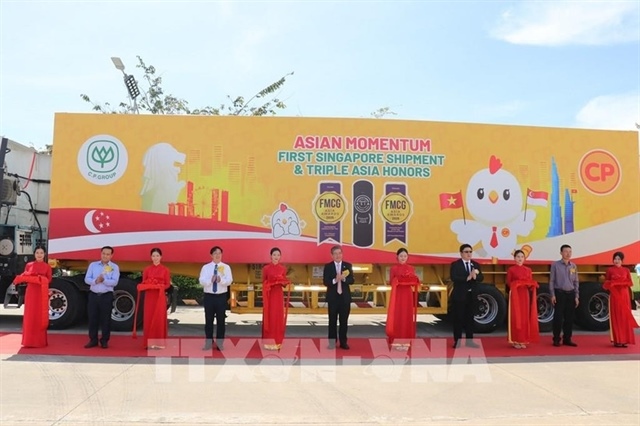Production shift from China benefits Vietnam’s industrial market: CBRE
Production shift from China benefits Vietnam’s industrial market: CBRE
Looking at the remainder of this year and 2020, property service provider CB Richard Ellis (CBRE) Vietnam has forecast an increase in industrial supply across Vietnam, benefitting from the production shift away from China.

CBRE said in a recent statement that it had recorded an increase in production moving from China to alternative locations in Southeast Asia, including Vietnam, last year.
While this trend is not new to many as production costs in China continue to rise, making relocation seem like a financially viable choice to many manufacturers, there are some other major drivers worth considering as well.
According to a November 2018 survey conducted by the UBS Evidence Lab, which collected responses from 200 manufacturing companies with a significant export business or supply to exporters from China, relative to the of their economies, ASEAN economies, especially Vietnam, may be well-placed to benefit from the production shift given Vietnam’s key economic fundamentals.
Aside from its high gross domestic product (GDP) growth, foreign direct investment and well-controlled inflation, the country continues to invest heavily in infrastructure and help manufacturers gain better access to key export markets by participating in several bilateral and multilateral trade agreements.
These factors are on top of Vietnam’s competitive land acquisition costs and labor costs versus those in China and other neighboring countries, which have been the underlying drivers of the China plus One strategy, as several surveys have found.
The Vietnamese Government has spent billions of dollars improving its infrastructure to help attract foreign investment. CBRE cited statistics by the Asian Development Bank and Bloomberg as indicating that Vietnam’s public and private sector infrastructure investment averaged 5.7% of the GDP in recent years, the highest in Southeast Asia.
CBRE pointed out that this direction has proven successful as improved major infrastructure projects, such as new highways, expanded ports and airports, have enticed developers to establish or expand industrial parks near these projects, allowing them to reference the new infrastructure as part of their offering to attract tenants from China.
Vietnam has clinched many agreements, including bilateral and multilateral agreements, with many nations. These pacts allow the elimination of customs duties among member nations, attracting more manufacturers to set up production in Vietnam to make use of this tax benefit on exporting to these markets.
Also, U.S. tariffs upon China coming on the ongoing trade war between these two countries is equivalent to a scenario of Vietnam essentially possessing a free trade agreement with the U.S. and Vietnam also poses a lower risk to trade war than China.
There is a fact that all Chinese products would be subject to an additional 25% tariff when Chinese products are hindered from export via that level of tax.
Therefore, Vietnam’s key exports, such as textile and garment, footwear, mobile phones, consumer electronics, wooden furniture, fisheries, bags, suitcases, and machinery could find better access into the largest economy in the short term.
On reviewing the tariff list by product type, CBRE noted that TVs, mobile phones and several types of wearable technology have not been included on the current tariff list, so manufacturers in these sectors might seek to relocate part of their supply chain to Vietnam to mitigate the trade war risk and benefit from the country’s competitive costs.
To position themselves to cater to the increasing demand for industrial supplies, foreign developers might pursue local partners with experience and major land banks to help fast-track their market penetration, according to CBRE.
A joint venture between local property developer Becamex and U.S.-based private equity firm Warburg Pincus was set up to form BW Industrial, offering already-built and customized factories and warehouses in strategic locations across Vietnam.
As markets and manufacturers evolve, developers will need to provide a variety of products, including land leasing, already-built factories and warehouses, customized facilities and sales and leasebacks to provide more value to their clients.
For already-built factories in strategic locations, CBRE predicted that product specifications could evolve from traditional and conventional single storey to multistorey factories, with two to six floors. While high-rise stock in the market is still limited, this could become a new trend as Vietnam aims to attract advanced technology and light industries, which demand high-spec quality industrial spaces.






















